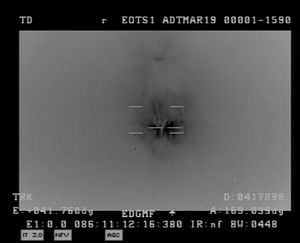India shocked the world, in the final days of March, by showing it had the capability to destroy a satellite in low-Earth orbit.
Indian Prime Minister Narendra Modi announced that the country’s Defence Research and Development Organisation had successfully used a new type of interceptor to demolish an Indian target satellite 300km (186 miles) above the Earth’s surface.
New Delhi is the latest to join an exclusive group of countries that have displayed the ability to deploy direct-ascent kinetic interceptors – missiles that head straight up from the Earth’s surface to release a kill vehicle that can obliterate a satellite with sheer kinetic force.
To date, the only other nations to have successfully displayed this technology against live targets in low-Earth orbit are China and the United States. The Soviet Union destroyed satellites during the cold war, using co-orbital weapons, and Russia is actively developing its own direct ascent interceptor today, known as the Nudol.
China’s test in 2007 was met with a widespread outcry from the global civilian spacefaring community. That year, the People’s Liberation Army had used an experimental direct ascent interceptor to destroy the Fengyun-1C satellite at an altitude of more than 800km above the Earth’s surface.
The resulting collision generated a massive amount of debris. Hundreds of pieces are expected to remain in orbit for decades to come.
India’s test, by contrast, was closer in nature to the U.S.’ demonstration in 2008 that it, too, could shoot down satellites.
That year, with a few software tweaks, Washington used a Standard Missile 3 Block I interceptor to destroy the USA-193 satellite in what it described as a necessary safety measure. The test created debris as well but at a much lower altitude and it no longer remains in orbit.
India’s test, by contrast, was closer in nature to the U.S.’ demonstration in 2008 that it, too, could shoot down satellites.
That year, with a few software tweaks, Washington used a Standard Missile 3 Block I interceptor to destroy the USA-193 satellite in what it described as a necessary safety measure. The test created debris as well but at a much lower altitude and it no longer remains in orbit.
But there’s nothing responsible about kinetic anti-satellite tests, all of which create debris. While China’s 2007 test was exceptionally egregious, Washington’s 2008 test served to further erode the norms against these kinds of tests. India’s test this year is likely to be followed by Russia’s test of its Nudol direct-ascent interceptor – a system still in development.
While Indian scientists argued that debris from the test would burn up during atmospheric re-entry over the course of weeks, Nasa administrator Jim Bridenstine said some debris had been propelled to altitudes higher than the International Space Station.
Even though the risk of debris from the Indian test colliding with the ISS remains low, the test unnecessarily increased the chances of an orbital mishap.
The utility of an anti-satellite weapon for India’s military is marginal. Pakistan is unlikely to drastically improve its use of space for military surveillance any time soon. While China, India’s other regional rival, operates more satellites than Delhi, it is difficult to imagine a conflict where India contemplates shooting down Chinese satellites and remains well-positioned otherwise to pursue victory.
Where India’s test makes a difference is in exhibiting the country’s great advances in high-altitude kinetic interception outside the Earth’s atmosphere. In effect, the anti-satellite test brings India’s sophistication in the realm of ballistic missile defence up a notch, giving Pakistan pause.
What India’s test does suggest is that it is now too late for a full-scale ban on the testing of anti-satellite weapons.
There were multilateral efforts in that direction in the aftermath of China’s 2007 test, aimed at averting a repeat, but while neither the U.S. nor India have caused that scale of orbital debris with their respective tests, they both have contributed to the abandoning of any norm against these weapons.
Space is the ultimate global commons. But these sorts of tests serve only to render it less hospitable for peaceful, civilian use – all while contributing a marginal military benefit.
This article first appeared in the South China Morning Post. It is republished here with kind permission.

































